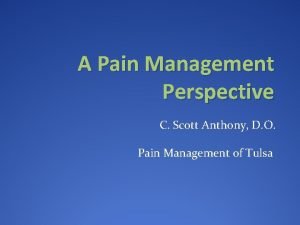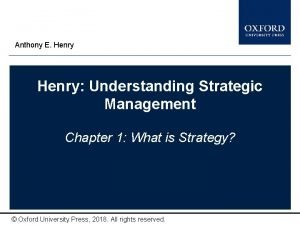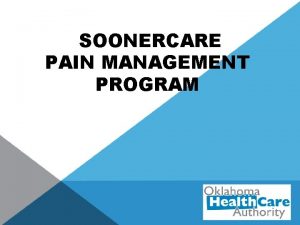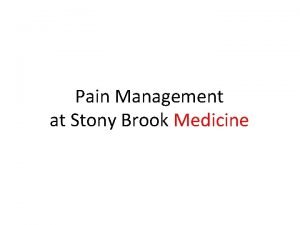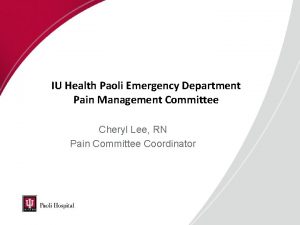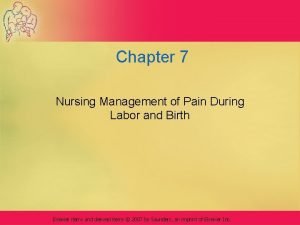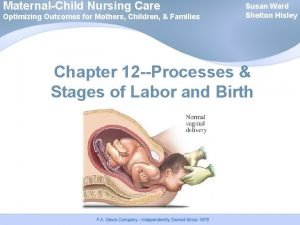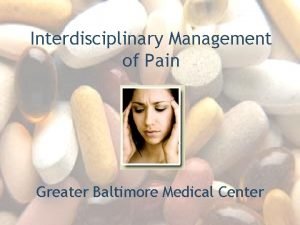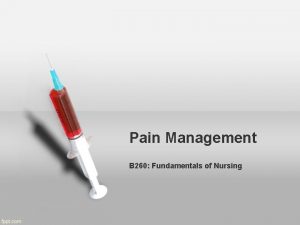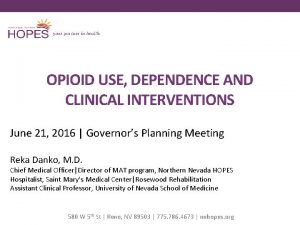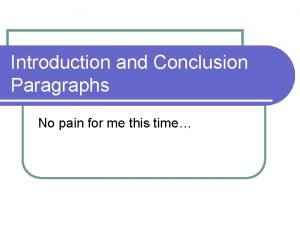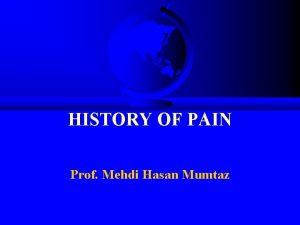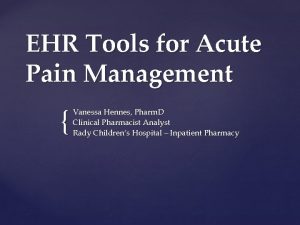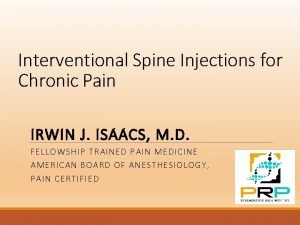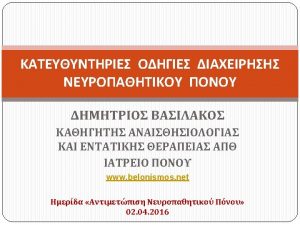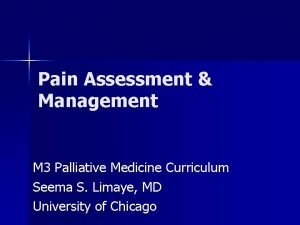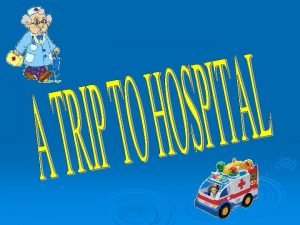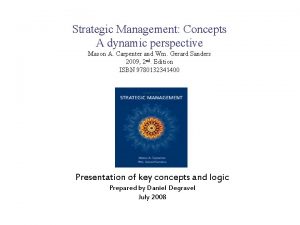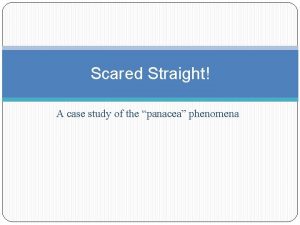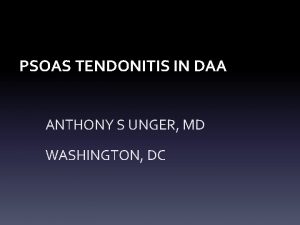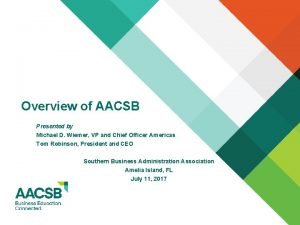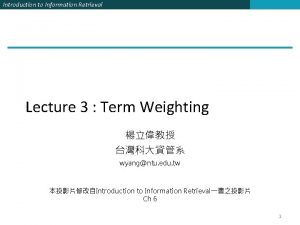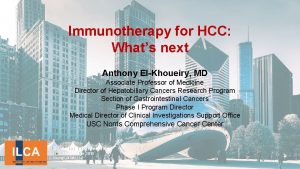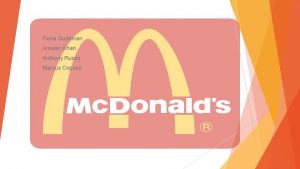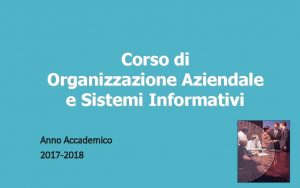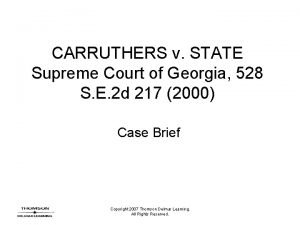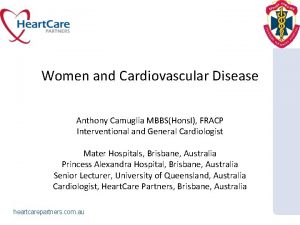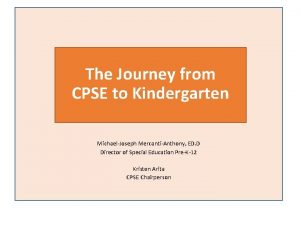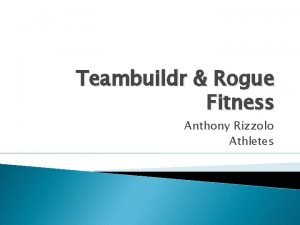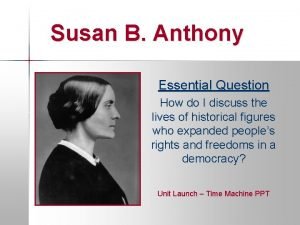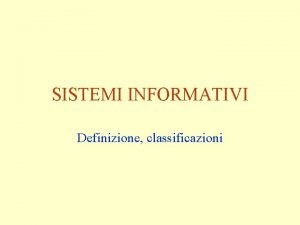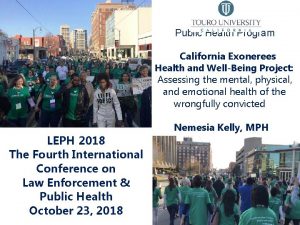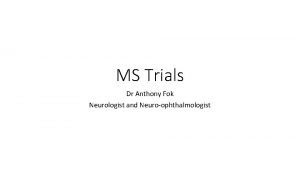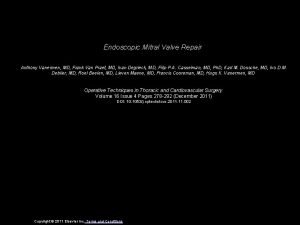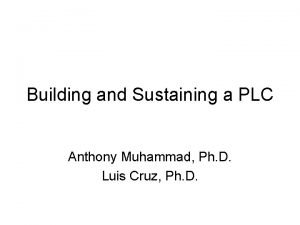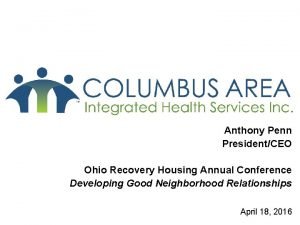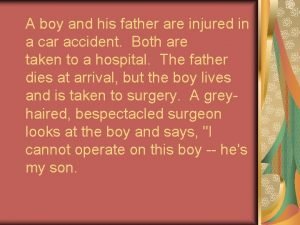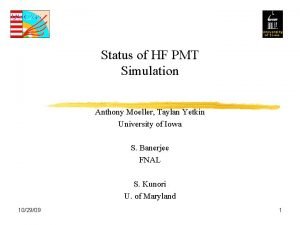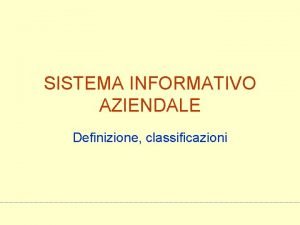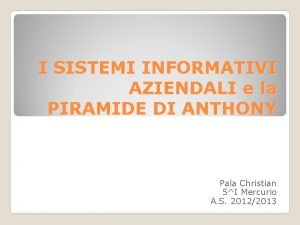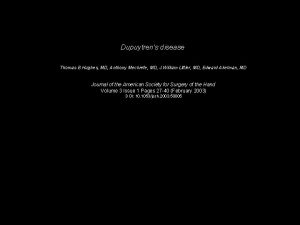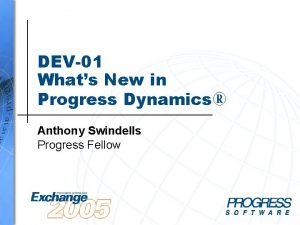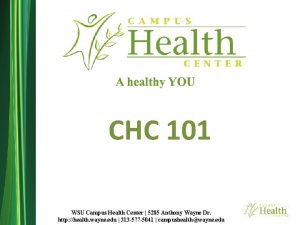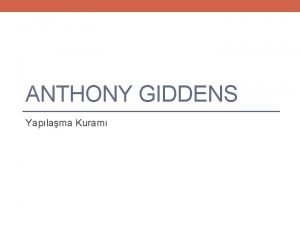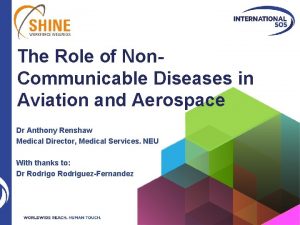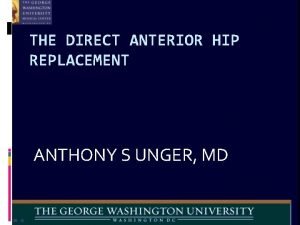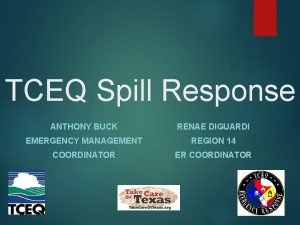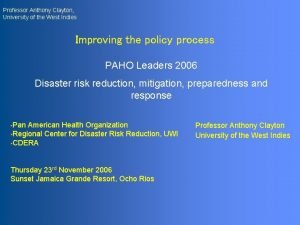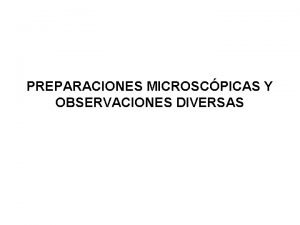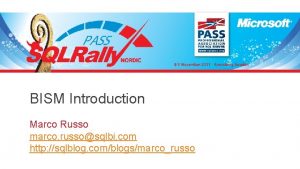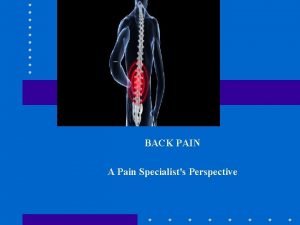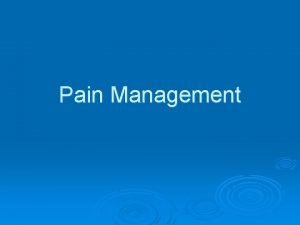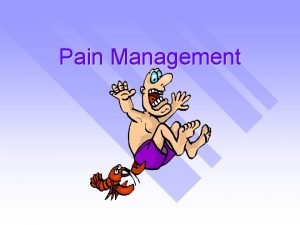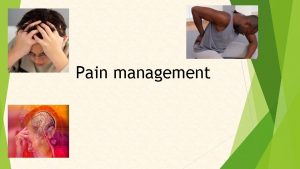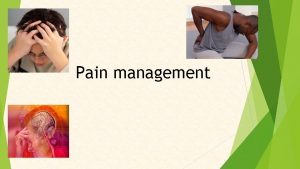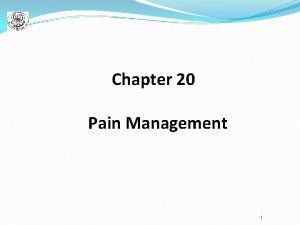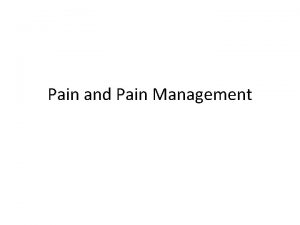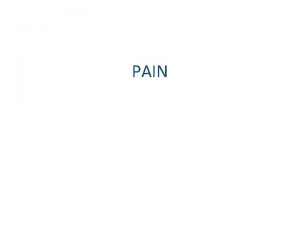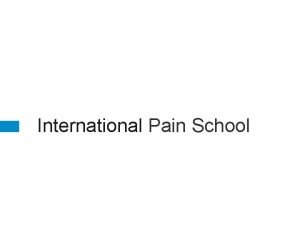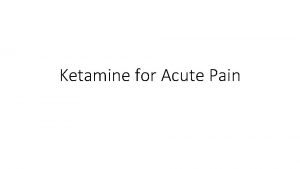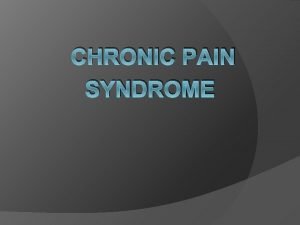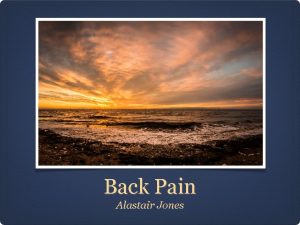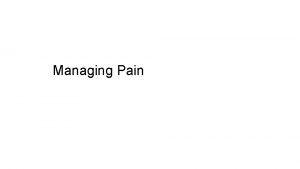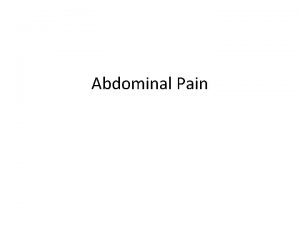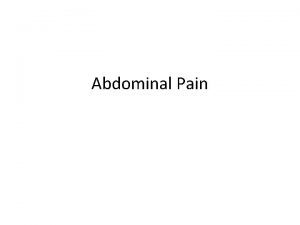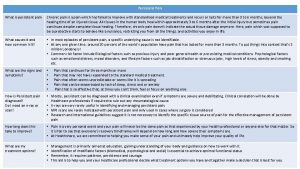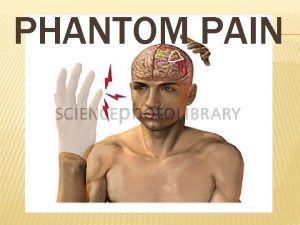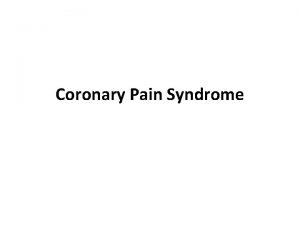A Pain Management Perspective C Scott Anthony D









































































































- Slides: 105

A Pain Management Perspective C. Scott Anthony, D. O. Pain Management of Tulsa

My Practice Observations �Definite change in referral patterns �The “perfect storm” �CDC guidelines have changed my practice �Frightened patients �My overriding goals �Improve function �Improve quality of life �Safe prescribing �Prevention of abuse and diversion


The Basic Pain Pathway



Opioid Prescribing �Chronic pain is highly complex �Opioids alone are often inadequate but helpful � 25 -50% improvement in pain scales �Opioids are beneficial in small subset of patients �Some patients would do well with discontinuation or reduction of opioids and pursue adjunctive therapies with psychological support �No “universal” efficacy with opioids

Contributing Factors to Inadequate Treatment and Prescribing �Physician lack of knowledge in best clinical practice �Inadequate research �Poor understanding of risk mitigation �Poor utilization of PMP and UDS �Conflicting clinical guidelines �Physician misunderstanding of dependence/addiction �Complete relief may not be an attainable goal

Expectations �Patient and physician usually have a different view �Perhaps the best way to avoid problems �Explain: �Your expectations �Listen to the patients expectations �Come to a middle ground of understanding �Develop a “trust” �Explain the rationale for your decision �Have available a print out of the CDC guidelines

CDC Emphasis: First Line Approach �Non-pharmacological approach �Non-opioid approach �Emphasis on �Behavioral therapies �Functional therapies �Adjunctive medications �Patient and provider expectation �Opioids are a “last resort” option

Are Opioids Efficacious for Chronic Pain? �Long term outcome studies are lacking �CDC insights �Opioid use may be the most important factor impeding recovery of function �Opioids do not consistently and reliably relieve pain and can decrease quality of life �The routine use of opioids cannot be recommended �Appropriate only for selected patients with moderatesevere pain that significantly affects quality of life

Patient Selection and Risk Stratification �History, physical examination and diagnostic testing �Psychosocial risk assessment �Expectations: physician and patient �Risk assessment is an underdeveloped skill for most clinicians �COT should be viewed as a treatment of last resort � Consider all other modalities prior to initiation � Use opioids in addition to a multidisciplinary approach to pain

Chronic Opioid Therapy (COT) �Consensus agreement that it can be useful in carefully selected patients with moderate to severe pain �Demands �Compliance: As with any medical problem �Documentation �Close monitoring through follow up �Vigilant monitoring for abuse and diversion �Assessment of opioid related side effects �Understanding of opioid use in chronic pain

CDC: Initiation of COT �Informed consent and discussion of risk vs. benefit �Therapeutic trial of 4 -6 weeks �Exhaustion of other modalities �Insufficient data on starting dose �“ Start low go slow” � Conversion tables �Ongoing monitoring and assessment of benefit vs. risk, expectations and alternative modalities �Consider a taper or wean even in functional patients

Patients at Risk �Psychosocial issues �History of addiction �Risk of relapse, harm and treatment failure �Adverse Childhood Experience (ACE) �Abuse, neglect, household dysfunction and traumatic stressors �Poor motivation and lack of insight �Opioid Use Disorder �Unrealistic expectations

Difficulties: Why? �Patient selection �Pain syndrome �Expectations �High dose opioid therapy �Opioid Use Disorder �Opioid induced hyperalgesia �Reliance only on opioids �Abuse and diversion

CDC Emphasis: �IR vs. ER/LA opioid therapies �Little mention of abuse deterrent medications �Benzodiazepine use with opioids �Significant increase in deaths and ER visits �Acute pain leading to chronic therapy �Methadone �Offering naloxone to patients at risk �High dose opioids

CDC Emphasis: High Dose Opioids �Providers should prescribe lowest possible dose �Additional precautions at > 50 MED’s �Should avoid > 90 MED’s �Demands documented increase in function and no adverse side effects �Recommend consultation over 90 MED’s �Closer follow-up �Consideration of other risk factors

Some Concerns with MED’s �Sudden dose escalations �Errors with opioid rotations �“Start low, go slow” �Data is retrospective �What about the highly functioning patient on opioids �Does not take into account: �Tolerance �Genetics/pharmacodynamics �Pain syndrome

Recent CDC Comments �Patients deserve safe and effective pain management �Taper and reduce doseage only when harm outweighs risk �The guideline is not meant to be a rule, regulation or law �It is not intended to deny access to pain medication �Not intended to take away from physician discretion and decision making �The ultimate goal of the guideline is to ensure patients who need opioids have access to them

CDC Summary Comments �Recommendations are based on the best available evidence �The scientific evidence is low in quality �Much left to be learned about opioid therapy �Need research leading to safer and more effective care �Strong evidence for many pain therapies is lacking �Does the potential harm outweigh the risks

The Adverse Effects of Uncontrolled Pain �Severe deconditioning �Loss of aerobic capacity �Weight gain �Catecholamine surges �Sleep disturbances �Depression and suicide �Persistent pain is a potent stressor �CDC asks: does the potential harm outweigh the risks

The “Ideal” Patient �Well defined pathology �Good insight and desire to improve �Willing to “work hard” to improve �Interested in other modalities and work-up �Not focused on opioids but desire to improve �Good understanding that opioids will provide “some” relief to help them improve �Examples

The “Wrong” Patient �Diffuse and poorly localized pain �No interest in work-up or other modalities �Focus is on opioids alone �Poor insight and unrealistic expectations �Poorly motivated with no desire to “work hard” �Poor functionality �Examples

Drug Seeking? �Even a skilled physician can be “duped” �Common scenarios patient request for opioids or opioid increase �Progression of disease �New painful diagnosis �Psychological issues �Poor understanding of pain and opioids �Failure to use adjunctives or otherapies �Addiction, abuse or diversion

Physician Protect Thyself �Pay attention to a pattern of activity that suggests abuse and address �Monitor closely through follow up and documentation �Use available tools: �PMP database �UDS and pill counts �Opioid risk tools �Obligated to protect yourself, your patient and society from opioid abuse and diversion

Prescription Monitoring Program �Powerful tool �Mandated in Oklahoma first visit and every 180 days �Physician and staff friendly �Helps with determining MED’s �Helpful to determine other scheduled drugs like benzodiazepines �Good “teaching moment” with the patient �Unfortunately a high percentage of overdoses are from non-prescribed opioids


Urine Drug Screening �All new patients and then random unless triggers seen �Becoming standard of care �An excellent education tool for the physician �Insurance driven limitations �Triggers for UDS �Need for confirmatory testing �Is the prescribed drug in the system �Are there illicit drugs or non-prescribed opioids in the urine

Pill Counts �Appropriate disposal of unused meds �Where is the medication if not in the urine? �On-site or at a local pharmacy �Ideally within 24 hours �When switching opioids �In circumstances of signs of diversion �Lockbox or safe

Common Mistakes �Continued escalation of opioids despite no evidence of improvement �Opioids used in pain syndromes know to be poorly responsive �Failure to document �Not addressing psychosocial issues �Lenient with abuse behaviors �Failure to use monitoring systems

Conclusion: Key Points �Thoroughly evaluate the pain complaint �Consider psychological issues �Consider opioids as a treatment of last resort �Use a contract and informed consent �Patients should demonstrate a high level of responsibility �An accountability system must be in place

Oklahoma Dentists and OU College of Dentistry Opioid Crisis Strategies M EDMUND BRALY DDS ACD FAACS ASSOC. PROF, OUCOD ORAL/MAXILLOFACIAL SURGERY IMM. PAST PRESIDENT OK DENT ASSOC.

Three hats: Practicing Oral Surgeon, ODA spokesperson, OUCOD professor ▪ Woodward High School Boomer ▪ Alva, Northwestern State Ranger ▪ University Oklahoma College of Dentistry, graduate member first class ▪ University of Oklahoma College of Medicine: four year residency in Oral and Maxillofacial Surgery ▪ Private practice 20 yrs, Enid; private practice 15 yrs, Norman. ▪ Teaching part time 30 yrs; full time 2 yrs ▪ Director of student and resident OMS Clinic, OUCOD ▪ Director of Pre-doctoral OMS Studies, OUCOD

Professional resume, ab. ▪ Board Certified: American Board of Oral and Maxillofacial Surgery ▪ Board Certified: National Board of Dental Anesthesiology ▪ Masters Certificate: American College of Oral/Maxillofacial Surg’s ▪ Fellow, American Academy of Cosmetic Surgery, American College of Dentists, Pierre Fauchard (International Honor) Society, OKU (Academic) Honor Society ▪ Chief of Staff/ Chairman of Board, Integris Bass Baptist Hospital ▪ Physician Surveyor, Accreditation Association for Ambulatory Health Care ▪ Co-Chair, Anesthesia Advisory Committee, Ok Board of Dentistry

Private Practice Oral Surgeon ▪ Write scripts for opioids only three ways vii, xii, or xvii. Basically two day, three day, or four day supply. Caught 2 bad guys! ▪ Never wrote for more than 7. 5 mg/tab ▪ International Conference of National Societies of Dental Anesthesiology, world wide perspective on our Rx writing. ▪ Active constant review of other State’s regulations as a consultant and examiner for AAAHC national accrediting agency. ▪ Helped write/edit the latest revisions to the Oklahoma Dental Practice Act. First major revision since 1950’s.

Oklahoma Dental Association- Imm Past Pres ▪ Oklahoma Dental Association has been proactively working with the Oklahoma Board of Dentists to be a positive force in meeting the challenges the State faces concerning opioid use, diversion, abuse, and addiction. Methods: publications and CE ▪ Multiple lectures provided over the last four years at State meetings (last year, 6 hrs), national AAOMS (8 hrs) course, and American Dental Association (multiple courses). ▪ Article written for ODA newsletter on Opioid prescribing and the Oklahoma Prescription Monitoring Program. (Article, unknown to the author until preparing these remarks, is required reading for dental students in their pharmacology course).

American Dental Association Oklahoma Dental Association American Association of Oral and Maxillofacial Surgeons ▪ All Dental organizations are now involved in pro-active provider continuing education on the opioid crisis ▪ ODA Patrick Sammon, Ph. D. Univ Kentucky CODent, COMed, physiologist. Tulsa, ODA meeting this year. Six hours of CE “The new face of drug abuse”- 3 hr and “Prescription Drug Abuse, Addictive Disorders, and Prescription Monitoring Programs”- 3 hrs. SW Dental Meet, Dallas the year before. Instructor, Fed Law Enforcement and Counter Drug Task Force Training Programs. ▪ AAOMS Keynote Speaker this year: Andrew Kolodny MD, Psychiatrist. Director, Opioid Policy Research, Heller School for Social Policy and Managment, Brandeis University. “Opioid and Heroin Crisis: An Epidemic of Addiction”. This month free to all 7, 500+ OMS in US. Permission to use in OUCOD classes, recorded speech, handouts. (His handout of keynote speech included in this Commission's record. )

Teacher, OUCOD ▪ We teach that opioids are only to be used when other less addicting medication will suffice. Typically, we teach four third molar removal requires Ibuprofen, 600 q 6 hrs. ▪ Two jaw surgeries get 4 day Rx for opioids, not renewed. ▪ Follow up Rx’s Ibuprofen, or suggest OTC. ▪ Pharmacology in Dental School, team taught by the Pharmacology Department, OUHSC. 14 week semester equivalent. ▪ Two hours on medications specific to sedation and anxiety in dental office

Pharmacology course ▪ Semester equivalent, one hour/week plus individual reading and an pharmacy observation requirement. ▪ Includes not only pharmacology lectures, but also: Drug Laws, including penalties Prescription Monitoring Program 23 page Office Based Opioid prescribing guidelines (OSMA, OK Board of Dentistry, D. O. Board, Pharmacy Board, Ok Dept Health, et. al. ) Includes Pt. Handouts and Poster downloads. Additional pharmacology in the Control of Pain and Anxiety course: 14 weeks course (2 hours lecture/week), 10 of 14 weeks on pharmacology of local anesthetic drugs, antibiotics, sedation medication, PMP, and Rx writing.

What we teach: ▪ Opioids should not be used unless other less addictive medications will not suffice for ACUTE PAIN. ▪ Opioids should be written for no more than a FOUR DAY SUPPLY, and should a follow on Rx be required, one should try NSAIDS or have patient move to OTC meds. ▪ Rx’s are not renewed without patient returning for follow-up examination. ▪ Appropriate queries to OK PMP Aware website must be documented in the patient record. (180 days) ▪ First lecture on Drug Laws and Prescription Writing ▪ Keep opioid naïve patients naïve! Especially teens.

Teaching Drug Laws and Prescription Writing. ▪ Description of the scope of practice of Dentists related to prescribing medications and the grounds for penalties. ▪ State Pharmacy Act: “licensed practitioners”…”includes Dentists licensed to practice and authorized to prescribe dangerous drugs within the scope of practice of such practitioner” No DDS BCP’s! ▪ Pharmacists responsibility…to use professional judgement…is this a legitimate medical purpose by an authorized prescriber acting in the usual course of the practitioner’s professional practice? ▪ Proper prescriber/patient relationship? Pt ID, diagnosis, discussion of treatment plan and options, offer counseling, provide follow up care. ▪ NO 1 st degree relationships (spouse, children, or parent) and NO 2 nd degree relationships (sibs, grandparent, grandchild)

Teaching PMP, what we’ve learned. ▪ Many patients will not volunteer that they have other prescribers ▪ New York experience is taught in “Avoiding Pain and Anxiety” class. Literature showing a nearly 70% reduction in the number of opioids prescriptions, and 78% fewer pills prescribed in that State after it enacted the requirement that prescribers check the PMP websites. “Impact of a Mandatory PMP on Prescription of Opioid Analgesics by Dentists” Rasubala, L. et al, PLo. S, Aug 2015. ▪ Half of opioid Rx’s are not taken completely- ADA, Dec 2016 ▪ Univ. Penn 6 months, 4/3 rds, 94% got opioid Rxs, 79 pts, 5 took all, the rest had over 1, 000 unused opioid pills in their homes. Day 1 pain 5, day 3 pain 0 -3 50%, day 5 pain 0 -3 80%. Journal of Drug and Alcohol Dependence. Extrapolation to USA/yr, over 100 million unused opioid pills. Average pt took 13 pills total.

Teaching what we’ve learned…. cont. ▪ Additional required reading in Controlling Pain and Anxiety course: ▪ Letter and accompanying information from Ok Department of Health on Oklahoma Prescribing Guidelines: ▪ Opioid Treatment for Acute Pain… 1 -9. no long acting, timed released forms, usually three days or less, not with benzodiazepines (greatly increases chance of addiction), no replacement for “lost” Rx’s, check PMP, provide intervention and referral if indicated. Provide patient education risks/disposal. ▪ Opioid Treatment for Chronic Pain… we teach this is NOT INDICATED IN DENTISTRY; patient should be referred to an Interventional Pain Physician for “chronic pain, ” even if of a Dental etiology.

What we’re teaching our students (OUCOD) and recommending to colleagues (ODA, AAOMS) cont. ▪ Limit opioid prescription to 3 days if possible, 4 days at most. Literature clear this is all that’s needed, and very little chance of addiction in that short period of time. ▪ Don’t prescribe opioids for chronic pain, refer those patients for counselling and pain management. Not with benzodiazepines. ▪ Don’t prescribe opioids if other non-opioid pain medications will suffice, i. e. , NSAIDS, etc. ▪ Advise patients of risks of opioid abuse/diversion/addiction ▪ Only prescribe to those with whom you have an appropriate doctor -patient relationship ▪ Advise patient on the importance of proper disposal of unused pills.

Issues Remain ▪ We know that ½ of the prescriptions written are never filled. Pain medications usually are, antibiotics less so. ▪ We know that patients usually only use approximately ½ of any pain prescription for the use it was written. ▪ We know that many of these partially used pain prescriptions remain in patients’ bathroom drawers and medicine cabinets (“in case they need it for something else”) 100 Million pills in US per year from Dentists alone? ▪ We call “using it for something else” diversion or abuse. We teach that. Yet, when asked, students will raise their hands and admit that they have unused meds in their homes. Old habits die hard. ▪ We teach proper disposal of medications, but some states are schizophrenic. . Some say flush (Oklahoma), others say that hurts the environment… We need a more formal system, with rewards (? ).

More Issues. ▪ Epidemic started in 1996 ▪ Marketing for Rx Opioids has skyrocketed since (See attached handout from keynote speech) ▪ Growth curve in marketing is closely followed by curve of Rx’s, which is followed closely by curve of deaths by overdose ▪ Fentanyl deaths first counted in 2016, climbed 540% in three years. ▪ In one year, more Americans killed by drug overdose than in the entire Viet Nam war. That wall gets bigger each year. ▪ Oklahoma: 1999 15 -18 deaths per 100, 000 population over 12 ▪ Oklahoma 2009 45 ++ deaths per 100, 000 population over 12

Patients tweet, re-tweet, twitter, demand, and Yelp ▪ Yelp, BBB, Consumer Affairs, Expresit, Foursquare, Glassdoor, Google Reviews, Home Advisor, Judy’s Book, Manta, Merchant Circle, Open Table, Planet Rate, Vend OP, Angie’s List…. . ad infinitum ▪ These aren’t even many out their for rating our feelings about our doctors and our dentists. ▪ Live by social media/ die by social media The Millinial Factor ▪ Insurance companies and even CMS several years back pushed the concept of “Pay for Performance”…it included patient satisfaction, and that put a wedge between not only the doctor and the patient, but also between the doctor and medical ethics. ▪ Do I do write what’s right and get yelped, or cave when I shouldn’t? This is a major discussion among Dental Ethicists now…. . ACD surveying ODA dentists on this issue this month (anonymous).

Strategies for successfully curbing the epidemic ▪ Take “patient satisfaction” out of the review of “performance”. Outcomes can be measured clinically (return to surgery, readmission, multiple procedures on the same tooth, etc. , ) but get yelp out of that metric. The rest, market forces should correct. ▪ Public education on appropriate pain medication use and formal disposal system. We keep pointing the finger at somebody else (doctors, loose borders, fake pharmacies, youth culture, Big Pharma, etc. ) We know it’s inappropriate to stay too long in the left lane…. do we know it’s inappropriate to doctor shop? . . to hoard old prescriptions? ▪ We keep track of prescribers’ activities…why not track and counsel doctor shoppers? ▪ Is having unused opioids in the family bathroom child endangerment? Marijuana= yes, opioids via 2 yr/old Rx= no? Nothing happens…. until something happens.

How big is the problem? ▪ Prescribers have been aware for years, since 1996 -97. ▪ Norman M. D. offices (three that I’ve visited) “We do not write pain prescriptions on Fridays. If you are worried that you do not have enough pain medicine to make it through the weekend you must come in and discuss it with us on Thursday” ▪ Seems silly…. . but we’ve seen the doctor shopper epidemic for years before it became the opioid addiction/diversion/abuse epidemic that it is today. Fake root canals, etc. “My dentist is out of town for the weekend, but he said you were a good dentist”……… Still, Wednesday’s surgery patient does not want to hear he can’t get pain meds from his doctor on Friday…he will “Yelp. ” Friday saw a patient threaten physical violence to doctor and assistant. Takes patient satisfaction to a whole new universe…

Oklahoma Dental Education is doing its part. . but there are factors…. ▪ Many of our students do not stay and practice in Oklahoma, 50% ▪ Many of our State’s new dentists trained in another State ▪ Not all States require PMP checks ▪ Nothing happens until something happens (like pilot logbooks) ▪ Top ten Dental prescribers of dangerous drugs are reported each month to the Board of Dentistry. (As are each provider type, to their respective Boards) ▪ PMP violations carry only those penalties prescribed by the Board of Dentistry. Nothing happens until something happens…

Thank You for your time. Questions? ▪ M. Edmund Braly DDS FACD FAACS edmund-braly@OUHSC. edu

Oklahoma Medicaid Responds to the Opioid Crisis Mike Herndon, D. O. Chief Medical Officer Burl Beasley, D. Ph. , MPH, MS. Assistant Pharmacy Director

Agenda • • Introduction/Background OHCA Initiatives Pharmacy Initiatives Naloxone Patient Review & Restriction-Lock In Results Summary

Poisoning-Drug Overdose Death Rates - Oklahoma 2014 600 Source: OSDH, Injury Prevention Service, Unintentional Poisonings Data 510 500 426 400 300 172 200 100 0 All Rx Drug Deaths Opioid Analgesics (Narcotics) Sooner. Care

Sooner. Care/Medicaid Cause of Death Drug Poisoning Mortality - CY 2014 200 180 160 172 151 Number of Deaths 140 120 100 80 60 87. 8% 53 40 20 0 35. 1% Sooner. Care ALL drug All prescription opioid Opioid deaths with and medication-related deaths benzo related deaths Count 172 151 53 Percent 87. 8% 35. 1% 23 13. 4% 21 12. 2% 14 8. 1% Methadone related deaths Non-opioid related Fentanyl related deaths 23 13. 4% 21 12. 2% 14 8. 1%

OHCA Initiatives

OHCA Initiatives • Pain Management Program & Toolkit • State Plan & Workgroup Involvement • Collaboration within and with other state agencies • Lock-in Criteria Enhancement 58

Sooner. Care Pain Management Program The Sooner. Care Pain Management Program is a designed to equip Sooner. Care providers with the knowledge and skills to appropriately treat members with chronic pain. To accomplish this, the Oklahoma Health Care Authority (OHCA) developed a proper prescribing toolkit.

Sooner. Care Pain Management Program • Three registered nurse (RN) practice facilitators are delegated to implement the components of the toolkit within selected Sooner. Care practices. • Additionally, two licensed alcohol and drug counselors are dedicated to assist providers with linking members with substance use disorder, or other behavioral health needs, to the appropriate treatment.

Toolkit Contents • Treatment protocols • Prescribing guidelines • Office visit forms • Patient handouts • Monitoring recommendations • Other resources

Navigation to Pain Management Toolkit Log on to www. okhca. org/painmanagement Click on “Pain Management Toolkit”

Pharmacy Initiatives Scope and Utilization • Tiered structure for receiving long-acting opioid • Duplication edits for short-acting and longacting opioids • DUR - concomitant use of opioid and benzodiazepines • Methadone restrictions – January 2017

Pharmacy Initiatives Scope and Utilization (cont. ) • Quantity limits • No more than 4 per day • Jan 2015 • Early refill limit • 90 % of the medication must be used before refill • Cumulative early refill limits 64

Naloxone

Naloxone • OEND program with ODMHSAS • 416 kits >20 y. o. • 218 kits distributed 19 y. o. via CHIP program – 1 save of 17 y. o. • 634 Total kits October 2015 - July 2016 • OHCA – Increase in naloxone claims paid – #0 – 2013 – #459 - 2017

OHCA Naloxone Claims CY 2013 – CY 2017 Data valid as of October 2017 896 215 0 2 CY 2013 CY 2014 84 CY 2015 CY 2016 CY 2017 Source: OHCA Pharmacy Services. Data valid as of November 1, 2017. 67

Naloxone Next Steps • No co-pay on Rx naloxone • Will NOT apply to Rx limit – December 1, 2017 • Expand education and collaboration

Patient review and restriction program Lock-in

Lock-In Program • Sooner. Care Pharmacy-administered program • “Locks” a member into one pharmacy AND one prescriber • Pharmacy claims will deny if not from designated providers • Various medications monitored • Referral by health care providers 70

Communication Strategies

Neonatal Abstinence Syndrome in Oklahoma Mary Anne Mc. Caffree, MD Neonatal Perinatal Medicine University of Oklahoma Joyce Marshall, MPH Maternal & Child Health Service Oklahoma State Department of Health December 19, 2017

What is Neonatal Abstinence Syndrome (NAS)? A group of problems that occur in a newborn who was exposed to addictive opiate drugs while in the mother’s womb A withdrawal syndrome experienced after birth by drug exposed newborns Generally follows opioid exposure, though other drugs implicated Alcohol, benzodiazepines (valium, etc. ), barbiturates (phenobarbital, etc. ), and certain antidepressants (SSRIs) Source: Medline. Plus Medical Encyclopedia and March of Dimes


NAS Video 1 video

Do More Opioids Equal More NAS?

Opioids Prescriptions increased 4 -fold over last ten years More deaths than car accidents In 2012, enough were prescribed to give every adult in the USA one prescription Rising deaths from heroin and synthetic opioids Source: Centers for Disease Control and Prevention

Opioid Prescription Rates by State (per 100 persons) Source: CDC, National Center for Injury Prevention and Control, Division of Unintentional Injury Prevention, 2016

14 1400 12 1200 10 1000 8 800 6 600 4 400 2 200 0 0 2002 2004 2006 2008 2010 2012 2014 2016 Death rate Opioid sales Morphine mg equivalents/person Rate per 100, 000 population Unintentional Opioid-related Overdose Death Rates 1 and Opioid Sales per Person 2, Oklahoma, 2000 -2016

Opioid Use During Pregnancy

Percentage of Women With an Opioid Pain Reliever in the 2 nd or 3 rd Trimester 30% 25% 20% 15% 10% 5% 2009 2007 2005 2003 2001 1999 1997 1995 0% Epstein RA, Bobo WV, Martin PR, et al. Increasing pregnancy-related use of prescribed opioid analgesics. Ann Epidemiol. Aug 2013; 23(8): 498503.

OKLAHOMA STATE MEDICAID CLAIMS DATA State Fiscal Year (SFY) 2016 Births = 30, 510 • 3, 946 members with opioid prescriptions filled (up to three days before delivery) • Per trimester • 1 st trimester = 1, 495 members/2, 381 claims • 2 nd trimester = 1, 863 members/3, 056 claims • 3 rd trimester = 1, 844 members/3, 224 claims *Member count is duplicated due to members in 82 multiple trimesters.

OHCA opioid pregnancy decline 83

National Collaborative on Maternal Opioid Use Disorder Identify current resources, identify gaps, and identify strategies to scale local programs into state and national programs. Identify measures of success that are: • • Nationally available Available through low burden means

National Collaborative on Maternal Opioid Use Disorder Illinois Maryland Massachusetts New Jersey New Mexico New York Participating States Northern New England Ohio Oklahoma Tennessee Texas Virginia

Neonatal Abstinence Syndrome


Neonatal Abstinence Syndrome in Rural vs. Urban Communities Villapiano NLC, Winkelman TNA, Kozhimannil KB, Davis MM, Patrick SW. Rural - Urban Differences in Neonatal Abstinence Syndrome and Maternal Opioid Use, 2004 -2013. JAMA Pediatrics. 2016 Dec 12.

Number of Neonatal Abstinence Syndrome Hospitalizations 450 392 400 350 306 Number 300 234 250 200 419 170 150 100 50 0 2012 2013 2014 Source: Oklahoma Hospital Inpatient Discharge Data, 2012 -2016 2015 2016

Number and Rate of Medicaid Births with Neonatal Abstinence Syndrome 500 450 400 350 300 250 200 150 100 50 0 Rate 14. 0 12. 0 10. 0 8. 0 6. 0 4. 0 2008 2009 2010 2011 Source: Oklahoma Health Care Authority, 2008 -2015 2012 2013 2014 2015 0. 0 Rate per 1, 000 Medicaid births Number

Mean LOS and Hospital Charges for NAS, 2009 -2012 2009 2010 2011 2012 Mean LOS (day) 22. 7 22. 9 22. 8 23. 0 Mean Charges* (2012 US$) $75, 700 $80, 500 $87, 700 $93, 400 *p<0. 001 Patrick SW, Davis MM, Lehmann CU, Cooper WO. Increasing incidence and geographic distribution of neonatal abstinence syndrome: United States 2009 to 2012. J Perinatol. 2015; 35(8): 650 -655.

Total Hospital Charges for NAS, 2009 -2012 2009 2010 2011 2012 Medicaid* $560 M $870 M $900 M $1. 2 B Private Payer* $130 M $170 M $210 M $200 M Self Pay* $20 M $40 M $30 M $40 M Other Payer* $14 M $30 M $730 M $1. 1 B $1. 2 B $1. 5 B Total Charges* *p<0. 001 Patrick SW, Davis MM, Lehmann CU, Cooper WO. Increasing incidence and geographic distribution of neonatal abstinence syndrome: United States 2009 to 2012. J Perinatol. 2015; 35(8): 650 -655.

Oklahoma Perinatal Quality Improvement Collaborative (OPQIC) Opioid Use Disorder in Pregnancy and Neonatal Abstinence Syndrome Work Group Neonatology Obstetrics Maternal Fetal Medicine OB Nursing Neonatal Nursing Social Work Mental Health Public Health

Key Intervention Points Preconception • Promote awareness of prenatal substance use • Universal screening, brief intervention and referral to treatment Pregnancy • Universally screen pregnant women for substance abuse and make referrals to treatment when appropriate • Provide enhanced prenatal services Birth • Use consistent and effective protocols for identification of substance-exposed newborns • Make referrals for developmental or child welfare services as needed Infancy Life Span • Provide developmental services • Ensure an environment safe from abuse and neglect • Respond to immediate needs of family members • Identify and responds to needs of exposed child • Respond to needs of mother and family members • Provide appropriate education, screening and support as children move through life span Source: O’Brien ML, Phillips SM. “Substance exposed newborns: Addressing social costs across the lifespan. ” The Massachusetts Health Policy Forum. No. 40. 2011. Available at http: //masshealthpolicyforum. brandeis. edu/forums/Documents/FINAL-SEN-Issue. Brief_For-Print. pdf. Accessed 7 -31 -2013.

NAS Video 2 video

Clinical Features of NAS Gastrointestinal Poor feeding/vomiting/loose stools Leading to dehydration and poor weight gain Central nervous system Tremors/hypertonia Irritability/decreased sleep Exaggerated reflexes Seizures Autonomic activation Tachypnea Yawning Dilated pupils

Zimmermann-Baer U. Finnegan neonatal abstinence scoring system: normal values for first 3 days and weeks 5 -6 in non-addicted infants. Addiction (Abingdon, England). 2010; 105(3): 524 -528.

Emerging Issues and Strategies

Opioid Agonist Therapies (OAT) Methadone and Buprenorphine (both recommended) Approved to treat opioid use disorder in pregnancy Mother: Less risk of overdose death and relapse Infant: More likely to go to term, higher birthweight, and experience less distress NAS risk

Pregnant Women in Treatment Getting OAT 36% 64% Yes No Analysis of the Substance Abuse and Mental Health Administration’s Treatment Episode Discharge Dataset. Sample: Pregnant women treated for opioid use disorder in FL, KY, MA, MI, MO, NY, NC, TN, WA, WV; 2013.

Hospital Variability and Standardized Care There remain significant inter and intra-hospital variation in treatment and outcomes for NAS Recent study of US children’s hospitals: Only 5/14 used the same pharmacotherapy >80% of the time Two-fold differences in risk-adjusted length of stay Large international quality improvement collaborative of 199 hospitals 44. 8% had a policy to standardize scoring 48. 6% had a policy on breastfeeding a substance-exposed infant 68. 0% had a policy on pharmacologic treatment of NAS Patrick SW, Kaplan HC, Passarella M, Davis MM, Lorch SA. Variation in treatment of neonatal abstinence syndrome in US Children's Hospitals, 20042011. J Perinatol. 2014. Patrick SW, Schumacher RE, Horbar JD, et al. Improving Care for Neonatal Abstinence Syndrome. Pediatrics. 2016; 137(5).

Rooming In Rooming in to create an environment where moms/babies can stay together when possible Culture differences between NICU, newborn nursery, and general inpatient wards? Environment in NICU helpful during NAS? Open bay? Lighting (e. g. bright? ) Noise level (e. g. loud, overstimulating? )

Breastfeeding safe and effective Promotes bonding Very little OAT medications in breastmilk Recent blackbox warning for codeine, tramadol Reduces LOS for NAS Clear exclusion – HIV, HCV with cracked/bleeding nipples Academy of Breastfeeding Medicine Appropriate: >90 days in treatment Inappropriate: Active illicit use Maybe: >30 days in treatment Source: Stephen W. Patrick, MD, MPH, MS, Vanderbilt University Medical Center

Recommendations Standardized protocols for treatment Collaborative, multidisciplinary, nonjudgmental care based on needs of infant-mother dyad Pharmacologic treatment as indicated Rooming in and breastfeeding support unless medically indicated otherwise Gentle, soothing environment with minimal stimulation to calm and soothe infant Adequate nutrition to minimize weight loss Medical follow-up care and social services following discharge Source: Neonatal Abstinence Syndrome Karen Mc. Queen, R. N. , Ph. D. , and Jodie Murphy-Oikonen, M. S. W. , Ph. D. N Engl J Med 2016; 375: 2468 -2479 December 22, 2016 DOI: 10. 1056/NEJMra 1600879

Acknowledgements Oklahoma Healthcare Authority Stephen W. Patrick, MD, MPH, , MS, Vanderbilt University Medical Center Tennessee Department of Public Health Oklahoma State Department of Health University of Oklahoma Perinatal Quality Improvement Collaborative
 Okpmpaware
Okpmpaware Mad pain
Mad pain Period-like cramps during early pregnancy
Period-like cramps during early pregnancy Is pregnancy pain same as period pain
Is pregnancy pain same as period pain One point perspective drawing box
One point perspective drawing box Silo perspective vs business process perspective
Silo perspective vs business process perspective Understanding strategic management henry pdf
Understanding strategic management henry pdf Pain management okc soonercare
Pain management okc soonercare Pico pain
Pico pain Pain management stony brook
Pain management stony brook Iu health pain management
Iu health pain management Chapter 7 nursing management of pain during labor and birth
Chapter 7 nursing management of pain during labor and birth Ruben gonzalez vallina
Ruben gonzalez vallina Nonpharmacologic pain management nursing
Nonpharmacologic pain management nursing Npass pain scale
Npass pain scale Matrifen
Matrifen Pain management goals for nurses
Pain management goals for nurses Dr danko pain management
Dr danko pain management Conclusion of pain
Conclusion of pain Dr. mehdi pain management
Dr. mehdi pain management Pain management ehr
Pain management ehr Vertebrae
Vertebrae Res pain management
Res pain management Dr lascarides pain management
Dr lascarides pain management Pain management synonym
Pain management synonym Investment perspective of human resource management
Investment perspective of human resource management Investment perspective of shrm
Investment perspective of shrm Fighting means corporations
Fighting means corporations The classical perspective of management
The classical perspective of management Scoring model for international market selection
Scoring model for international market selection Edward anthony 1963
Edward anthony 1963 Edward anthony 1963
Edward anthony 1963 Beyond scared straight
Beyond scared straight Anthony delano walker
Anthony delano walker Anthony unger md
Anthony unger md Aacsb exchange
Aacsb exchange Herstelvisie anthony
Herstelvisie anthony What is approach, method and technique
What is approach, method and technique Information retrieval
Information retrieval Anthony el khoueiry
Anthony el khoueiry Anthony giddens social arv
Anthony giddens social arv Anthony petras
Anthony petras Susan b anthony
Susan b anthony Dr anthony goodman
Dr anthony goodman Anthony russo pizza
Anthony russo pizza Anthony rigazio-digilio
Anthony rigazio-digilio Stars hide your fires technique
Stars hide your fires technique Anthony schipani
Anthony schipani Anthony de mello despierta
Anthony de mello despierta Piramide di anthony esempi
Piramide di anthony esempi Anthony carruthers
Anthony carruthers Cmu autolab
Cmu autolab Anthony prada
Anthony prada Anthony thomas fundraising
Anthony thomas fundraising Anthony kadi
Anthony kadi Anthony giddens begreber
Anthony giddens begreber Anthony camuglia
Anthony camuglia Michael-joseph mercanti-anthony
Michael-joseph mercanti-anthony Anthony rizzolo
Anthony rizzolo Quakers
Quakers Sistema informativo aziendale definizione
Sistema informativo aziendale definizione Obie anthony exonerated nation
Obie anthony exonerated nation Anthony riccio md
Anthony riccio md Andrew anthony abate
Andrew anthony abate Dr fok neurologist
Dr fok neurologist Cpge
Cpge Animal anthony apnic
Animal anthony apnic Anthony vanermen
Anthony vanermen Anthony fernandez
Anthony fernandez Anthony muhammad
Anthony muhammad Anthony de mello reflexiones
Anthony de mello reflexiones Anthony penn columbus ohio
Anthony penn columbus ohio Anthony and cleopatra are lying dead on the floor
Anthony and cleopatra are lying dead on the floor Michael mann anthony mann
Michael mann anthony mann Dr anthony muhammad transforming school culture
Dr anthony muhammad transforming school culture The life cycle of bureaus anthony downs summary
The life cycle of bureaus anthony downs summary Anthony teelucksingh
Anthony teelucksingh Anthony moeller
Anthony moeller Sistema operativo aziendale
Sistema operativo aziendale Anthony mao
Anthony mao Piramide erp
Piramide erp Dr mechrefe
Dr mechrefe Duke blue paint
Duke blue paint Anthony swindells
Anthony swindells Anthony noll
Anthony noll Pedagogische opdracht onderwijs
Pedagogische opdracht onderwijs 5285 anthony wayne drive
5285 anthony wayne drive Yaplama
Yaplama Anthony wesley jupiter
Anthony wesley jupiter Anthony michaels sister
Anthony michaels sister Carl andre
Carl andre Casey anthony case study
Casey anthony case study Dr anthony renshaw
Dr anthony renshaw Anthony unger md
Anthony unger md Anthony underwood dickinson
Anthony underwood dickinson Anthony moeller
Anthony moeller Tceq spill reporting
Tceq spill reporting Anthony tomei
Anthony tomei Anthony battersby
Anthony battersby Anthony atkin
Anthony atkin Professor anthony clayton
Professor anthony clayton Tincion de anthony
Tincion de anthony Anthony 1993 recovery
Anthony 1993 recovery Anthony dugard
Anthony dugard Anthony russo
Anthony russo Ancheta sociologica
Ancheta sociologica
